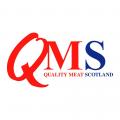
Regularly weighing cattle has helped the Angus Monitor Farmers select animals for slaughter and monitor cattle growth rates to maximise their outputs and improve business efficiency.
Robert and Alison Stodart farm alongside with their two sons Rory and Tom. They have a mixed business which includes breeding and finishing cattle, sheep, free-range laying hens and arable land in spring barley, winter wheat, winter oilseed rape, turnips and fodder beet.
The Stodart family weigh fattening cattle to avoid penalties for cattle over 400kg deadweight and to select butchers’ cattle every week within a narrow weight margin of 550-580kg.
At Mill of Inverarity Farm, all calves are weighed at weaning and cow weights are recorded too. The lowest performing cows are culled.
Mr Stodart has recently installed a Ritchie Beef Monitor. “So far we have had two batches of finishing cattle on the monitor and currently we have the 2020 bulling heifers on the monitor. They will calve at two years old, and it is essential that they reach bulling weight of at least 420kgs.”
The beef monitor has also been used outside, when finishing Aberdeen Angus bullocks at paddock grazing.
The rotational grazing systems at Mill of Inverarity have been a great success and have reduced fertiliser use and increased stocking densities. However, a limitation of this grazing system is the restrictions presented when weighing cattle due to the movement of livestock out with the system and the practicality of moving cattle back to the farmyard.
Combined with the Stodart’s transition towards more native cattle breeds and a grass-based finishing system, the issue of weighing cattle regularly becomes greater.
The weigh system was purchased with a Photo Voltaic (PV) panel, which supplies the reader with electricity, allowing the cattle to be monitored remotely. This system had been tried and tested within a set stocking system but not within a rotational grazing paddock system.
Despite a few teething issues, such as water connections and poaching due to the wet summer, the purchased batch of Aberdeen Angus cattle were successfully monitored while at grass and the beef monitor will be used more intensely in the future within the rotational grazing system.
Mr Stodart has utilised the data gathered by the beef monitor to gather bulling weights, assess if new rations are working as expected and identify animals ready for slaughter.
Rory Stodart added: “The app that I have on my phone for the weight monitor has a traffic light system which alerts you to any changes in weight gain for individual animals. This helps identify any animals that aren’t performing as they should and, in theory, can flag issues before they can be seen by eye, for example, pneumonia, fluke and worm burden.”
One of the most interesting things the Stodart’s have discovered from implementing the beef monitor is that every time cattle are disturbed; they don’t put on weight for around 5-6 days after.
Rory Stodart said : “The current batch of bulling heifers we have on the monitor have been out of their court on a few occasions over the winter for vaccinating and mucking out, but for no longer than 5hrs each time,”
“Interestingly, for the 5-6 days after they’ve been out, each animals’ weight gain per day reduced, before returning to where it was prior to handling.”
Looking ahead, Mr Stodart concluded: “The beef monitor will become more user friendly when EID legislation is in play which will reduce the time pairing cattle numbers to EID chip numbers.”



Comments: Our rules
We want our comments to be a lively and valuable part of our community - a place where readers can debate and engage with the most important local issues. The ability to comment on our stories is a privilege, not a right, however, and that privilege may be withdrawn if it is abused or misused.
Please report any comments that break our rules.
Read the rules hereComments are closed on this article